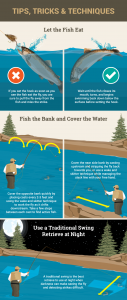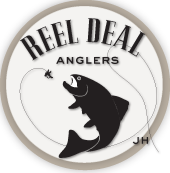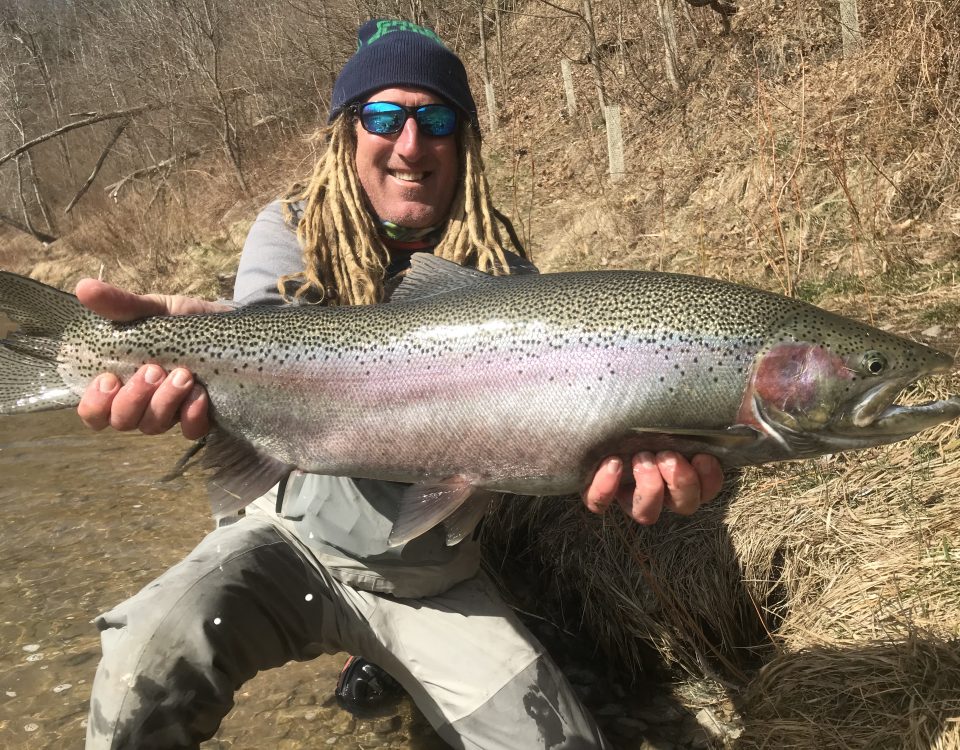MASTERING THE MOUSE RETRIEVE
How Fish Behave During a Solar Eclipse
August 21, 2017Wyoming Game and Fish Regional Newsletter
November 1, 2017MASTERING THE MOUSE RETRIEVE
Looking to catch big fish? Maybe it’s time to use a big fly! Mouse-patterned retrieves are designed to resemble live mice and attract larger fish looking for a bigger meal! But it’s not just about casting the mouse and waiting – you need to have the mouse simulate what the real thing would look like in the water. It’s not just a fly – it’s a proven technique to catch yourself some big trout!
The Mouse Fly – Mastering the Mouse Retrieve
Mouse-pattern flies are meant to look like a small field mouse and behave like one in the water. A typical mouse fly designed for trout fishing will be 2-3 inches long and tied on a size 2-6 wide-gap hook. Mouse flies are most often tan, brown, or grey, just like the real thing. Many materials can be used to create mouse-pattern flies, but the most realistic flies are tied using deer hair because of its buoyancy and natural appearance. Keep in mind that mouse flies are meant to ride high on the surface of the water, so your pattern of choice should feature deer hair, foam, or other buoyant materials to help it float.
Many fly shops carry at least one mouse-pattern fly, but these flies are often designed for bass fishing and have a heavy monofilament weed guard looped over the hook to protect it from snags. This feature is helpful if you are fishing in weedy or brushy areas, but it is unnecessary for trout fishing and can hamper your ability to hook fish. You can easily remove the weed guard by cutting it off with nippers.
Even large trout have relatively small mouths for their body size, so hooking them on such a bulky fly can be a challenge. To get better hookups, some anglers have started tying their mouse flies with stinger hooks positioned farther back on the fly, toward the end of the tail. If you are getting strikes but having trouble connecting with fish, a stinger hook fly may be the answer.
Making It Swim – Mastering the Mouse Retrieve

There are two general ways that mouse flies are fished. They can be “waked” or “skittered” using the rod tip, or “stripped” by pulling in the line by hand. Both techniques are effective and have their place in the mouse angler’s bag of tricks.
The Wake and Skitter
Waking a mouse fly is most effective when there is a steady current. In most cases, you will want to position yourself across from your target and place your cast upstream. Make a quick mend when the fly hits the water to remove any drag that might pull the fly away from your target, then raise your rod tip to remove slack line from the water and create a direct connection to the fly. Twitch the rod tip as the fly comes toward you while slowly retrieving the slack with your free hand. This will make the fly look as if it is swimming and struggling in the current.
This method can also be used to fish in a downstream direction to wake the fly on a tight line. Cast the fly across or slightly downstream, make a quick mend to reduce unwanted drag, then allow the fly to swing slowly across the current, generating a sizeable wake behind it. Follow the fly with your rod tip to keep it swimming at a steady pace. You can experiment with raising the rod and imparting the twitching action with this retrieve as well.
The Strip
In areas with little or no current, you will need to change your approach to get the fly to swim properly. Cast beyond your target and allow the fly to settle. If there is some current, you may want to make a mend so that the fly is not pulled away from the strike zone. Keep the rod tip low and point it at the fly, then retrieve the line in very short, steady strips with your free hand.
Emulate a mouse
Try to imagine how a mouse would look while swimming. Mice do not pop and splash their way through the water like an Olympic swimmer doing the butterfly. They plod along treading water with their head slightly above the surface and their body submerged. Imitate this slow, steady swimming action with your retrieve and you will attract the big fish.
Let the Fish Eat
When a big trout rockets out from beneath an undercut bank and smashes your mouse fly, your first instinct might be to jerk on the rod, but you will be pulling the fly right out of the fish’s mouth. Try to stay relaxed here! Allow the fish time to close its mouth and turn with the fly before setting the hook. Simply watching the fish eat and turn can be helpful for some, but if you are having trouble keeping it together, try counting “one, one thousand” before slamming the hook home.
Fish the Bank
Mouse flies work in a variety of water, but it makes sense that presenting the fly where trout are most likely to see the actual critter will get you more strikes. Mice, voles, and other rodents end up taking a dunk more often than you may think, but when they do it is usually because they fell from the bank. When they end up in the water, their first instinct is to escape danger by swimming as fast as possible back toward shore. By presenting your fly as close to the bank as possible and doing your best to keep it there, you are offering the most natural presentation to the fish. You can accomplish this either by making short, quick presentations to the opposite shore while wading, or casting upstream and using the wake and skitter technique to swim the fly back toward you along the near bank.
Keep an eye out for steep banks with plenty of structure and depth, undercuts, and grassy shorelines, as all will have the potential to be good mouse fishing spots.

Tips, Tricks and Techniques – Mastering the Mouse Retrieve
Cover the Water
Whenever fishing large flies with an active retrieve, it makes sense to cover the water quickly rather than saturate an area with multiple casts. Trout have acute senses and they are sure to immediately notice a giant mouse struggling across their dining room table. You are searching for an aggressive reaction from a predator, and not all trout will be in the mood to react at all times. Keep moving and cover the water methodically by placing a cast every few feet, paying extra attention to any obvious structures and fishy looking lies. This way you will place your fly in front of more fish and increase your odds of finding one that is in the mood.
Try Fishing at Night
Where it is legal, nighttime mouse fishing can be a real adrenaline rush. Do some daytime recon on your favorite river to determine some good areas that will be safe to approach at night, then return well after dark with a mouse fly attached to some heavy tippet.
Nighttime fishing introduces an obvious challenge. The darkness will make it harder to wade, cast, and detect a strike. Try to use just your flashlight on the trail as you approach the river, and turn it off well before you reach the water. This will allow your eyes time to adjust to the low light.
In areas with some current, a wake or swing retrieve on a tight line can be the best approach at night. Start at the top of the hole and work methodically, moving a couple of steps in between casts. With the line tight from downstream water tension on the fly, you will feel the weight of the fish when it strikes.
If there is little or no current, you will need to tune in with your senses to detect a strike. Try to focus your vision on the general area where your fly is and pay attention to any unnatural movement. Get in tune with the rhythmic sound of the river and listen for any splash or swirl that is out of sync. This could signify a fish has come up to take a swipe at your fly.
You will hook more fish if you are patient and don’t set the hook until you feel the weight of the fish. This can be hard to do when you can barely see and your adrenaline is racing, but you will be rewarded with more big fish in the long run.




